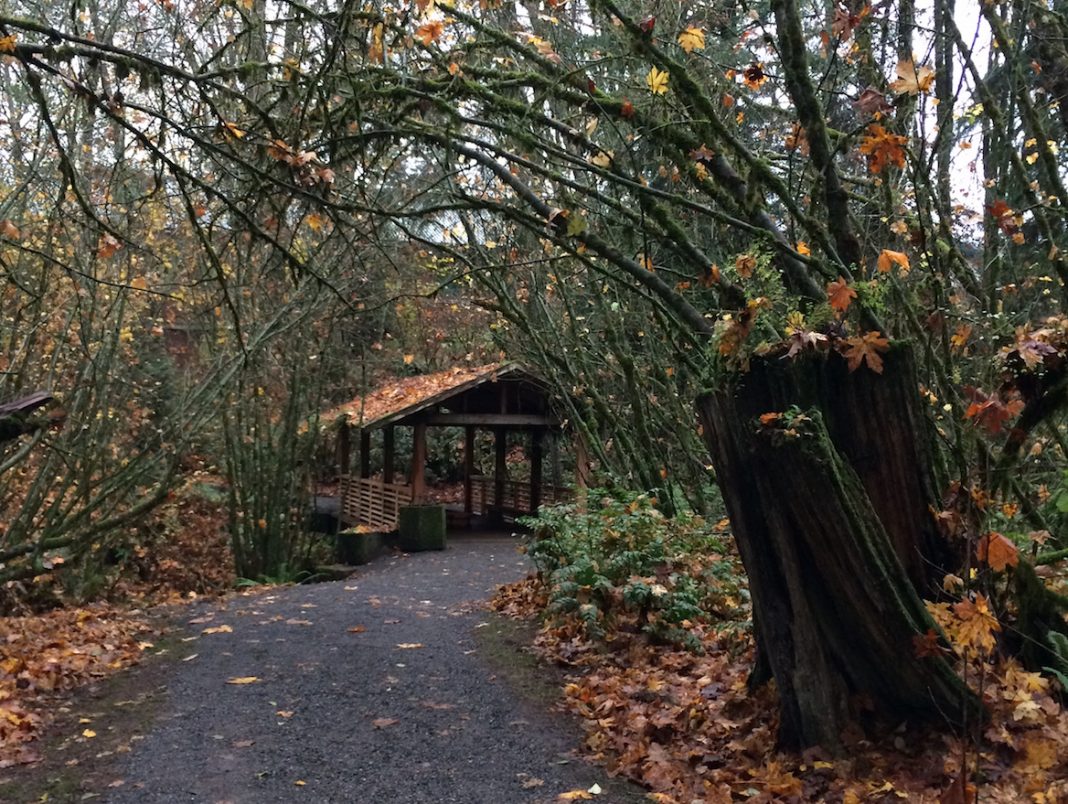Finding a peaceful spot on a fast-moving college campus is often a challenge. However, we are fortunate many of our state colleges and universities have been designed amid beautiful natural settings. South Puget Sound Community College is no exception. Preserving Percival Creek, which runs through the campus, has always been a high priority. With the recent restoration of the Percival Creek Footbridge, the creek is once again more easily accessible for viewing, and the trek from one end of campus to the other, a bit easier. It also provides the campus community a place to pause and regroup alone or with others.
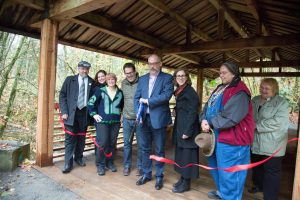
The Percival Creek Footbridge has an interesting history and was commissioned thanks to the One Percent for the Arts Project, which was authorized in 1974 to provide public art on college and university campuses. In 1989 when the Learning Resource Center was built nestled among giant trees, a committee was tasked with choosing a corresponding piece of art. Walking from the parking lot to the building, the rumbling of Percival Creek often reverberated. This environment obviously influenced the committee’s decision. San Francisco artist Peter Richards was commissioned to create a work of art that would also be a functioning footbridge across the creek.
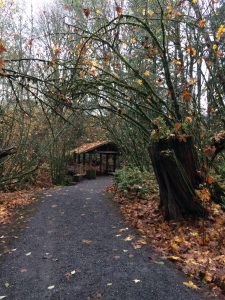
Richards, known for his functional art, designed the bridge of rough cedar timbers with the aesthetics of early sawmills in mind and used Japanese joinery with no hardware to achieve a warm inviting natural design. In describing the footbridge, Richards said he designed it to, ”host the kinds of human exchanges that occurred around the well or spring for thousands of years.”
Warm human exchanges may endure for centuries, but rough cedar timbers exposed to rain forest conditions have a much more difficult time lasting even for decades. Eventual safety concerns emerged as the bridge began deteriorating in places, so it was closed to the public but remained a beautiful art work to enjoy from afar. In 2005, talks of conserving and renovating the Percival Creek Footbridge began. It was too important to the college community to allow it to remain closed.
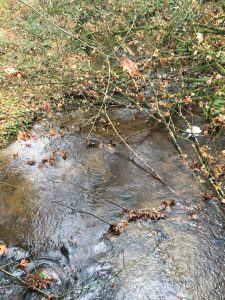
For the past decade Richards, SPSCC, Washington State Arts Commission, the Department of Fish and Wildlife, Sargent Engineers, Inc. and Forma Construction have collaborated to restore the bridge and ensure it meets current code requirements while maintaining the integrity of the bridge as art. Janae Huber, Collections Manager, Art in Public Places, who facilitated the process for the State Arts Commission and Laura Price, Director of Facilities at SPSCC, who directed the project for the college, both commented on how such a complex conservation project has been moving so much more smoothly than anticipated.
The first phase of the project was completed in early November 2016 with the reopening of the Percival Creek Bridge to the public including a ribbon cutting ceremony attended by all the collaborators as well members of the Nisqually and Squaxin Tribes, who participated in the planning. SPSCC Foundation Executive Director Tanya Mote represented the Foundation, which played a key role in funding the much-needed trail improvements surrounding the Bridge.
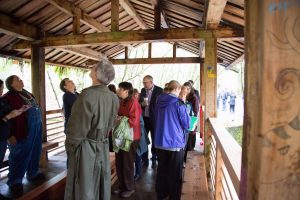
Phase One included replacing the decking, working on the handrails to bring them up to code, and providing a grate in the well cut into the bridge deck which previously had been completely open. “In 1989 these elements were definitely not part of the conversation,” Janae Huber mused, “but they are requirements in 2016!”
She continued, “This project is a much trickier restoration than many since it combines functionality, the artist’s vision, and the ecological consequences of sitting over a salmon run, yet all the partners have been exemplary.” Until I listened to Janae and Laura detail the complexities, I would never have imagined the time and energy that has been expended on this project.
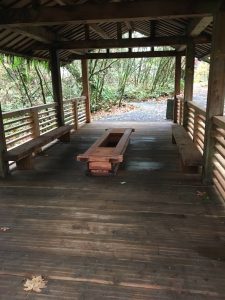
Phase Two will look at structural concerns and the roof and canopy. The beautiful old trees surrounding the footbridge have shed many wet leaves damaging the cedar roof over the years. During this phase, all parties will continue to work with Peter Richards to retain the integrity of his art while searching for more lasting solutions. The third phase will involve some reinforcement at the foundation and a partnership with the Department of Fish and Wildlife to prevent further erosion.
On a recent cloudy fall afternoon, I wandered over the newly designed trails to the Percival Creek Footbridge, sat down on a cedar bench and looked through the center well at the gushing creek. No salmon graced me with their presence, but I imagined all the quiet reflections and “human exchanges” that will take place in this beautifully restored space. It is worth a visit to South Puget Sound Community College to enjoy this peaceful space.
Sponsored









































